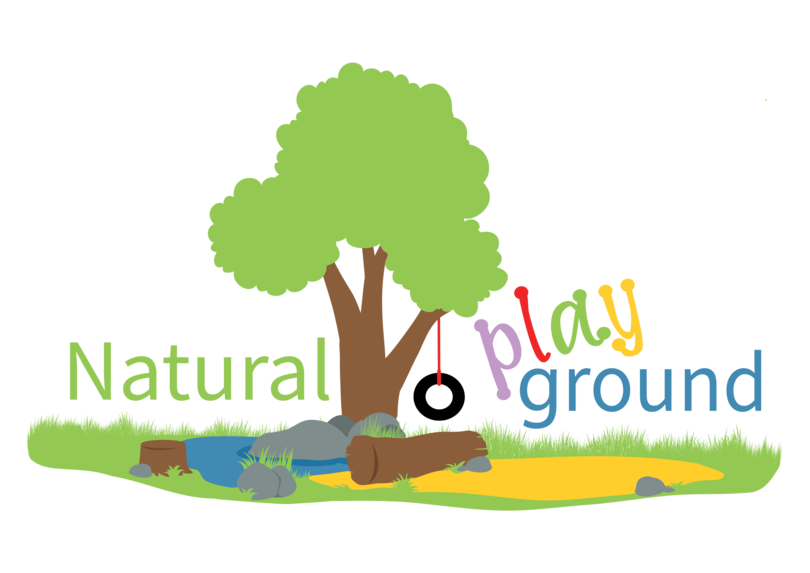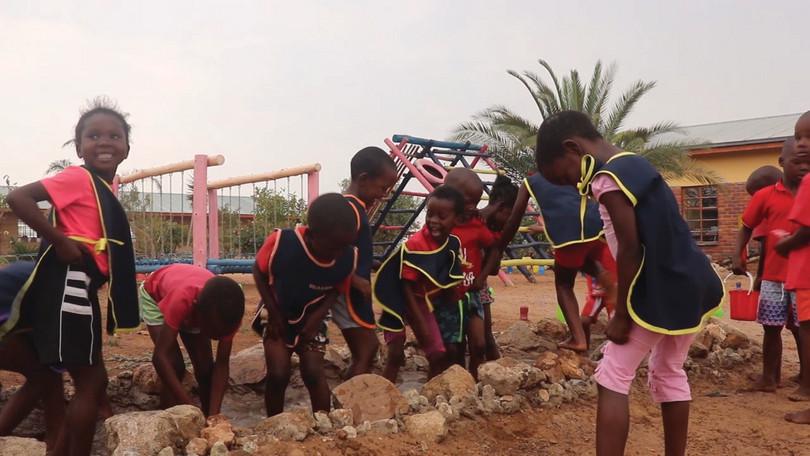Introduction
When children play in the early years of their lives, they are developing skills, habits, and attitudes that become the foundation for their schooling and adult work life, and that will stay with them for the rest of their lives. Play is so important for the development of a child that it has been identified by the United Nations1 as a right of every child.
The skills required to properly develop self-discipline, motivation, and the ability to collaborate, all start to take root in the first six years of life. Through play, children learn how to cope with frustration, how to keep trying until they get it right, how to share with others, and how to express themselves. In addition, the foundations for reading, writing and maths are laid down during play, ensuring that children are ready for school.
What is the Natural Playgrounds Toolkit?
In many places, children lack stimulating play opportunities. The Natural Playgrounds Toolkit was developed by Penreach to raise awareness of the importance of play and to empower communities, grade R teachers and early childhood practitioners, by providing them with the skills required to build a playground for young children out of natural resources.
Who is it for?
The Natural Playgrounds Toolkit is a manual designed for you as a grade R teacher, early childhood development practitioner, community development worker, or for any other interested stakeholdersStakeholders (Partners) People who have an interest in realising the project in favour of the children. to study individually or as a group. It is meant for you to study individually or to use for your discussions as a group, and provides you with the guidance and tools required to build a natural playground.
How was it developed?
Penreach, with the support of the Roger Federer Foundation, piloted the natural playgrounds initiative in several locations in Mpumalanga, South Africa, with local communities and schools. Another Roger Federer Foundation partner, Molteno, also drew lessons from the Penreach natural playgrounds initiatives and has also replicated natural playgrounds in several schools and communities in Limpopo Province in South Africa. Through this practical experience and lessons learnt during these pilots, this natural playground manual was then developed. So, what you are learning here has been successfully applied in practice!
How should it be used?
The toolkit is divided into five sections that represent the different steps to be followed in establishing a natural playgroundNatural Playground An area where kids can play with natural elements such as sand, water, wood, and living plants.. In the toolkit, you will find a toolbox of practical tools and samples that will help you consider everything necessary to make a success of your project. The toolkit will guide you step by step through the whole process of establishing a natural playground in collaboration with parents and your local community.
While you work through the toolkit, you are encouraged to keep a journal or a set of notes that can help you reflect on your journey and also to note down discussion points for your learning group. At first glance, some of the tools may seem to contain similar information, but they are all actually important in their own right and build on each other. Each tool, therefore, forms a specific part of the process that enables you to get to the end result. There is no hard and fast rule that you must use all the tools, or use them all exactly as they are presented – adapt and be creative as you see fit. If you are an experienced community development worker, some of the tools may seem so obvious that you could feel tempted to skip them. We do strongly suggest that you consider the pros and cons carefully before discarding a tool. Remember, however, that our goal is to leverage the experience, expertise and resourcesResources A supply of money, materials, staff, volunteers, and other assets that can be used by the project to effectively achieve its aims. that you and your community members and stakeholdersStakeholders (Partners) People who have an interest in realising the project in favour of the children. bring to the table collectively, and to help you all successfully build your children the best natural playground with as many natural resources and as little financial cost to you as a school or community as possible.
Children’s legal right to play
International laws and regulations on play
United Nations Convention on the Rights of the Child
Article 31:
- Right to leisure, play, and culture appropriate to the age of the child.
- Right of the child to participate fully in cultural and artistic life.
Article 12:
- Respect for the views of the child.
- Children have the right to have their opinions taken into account.
African Charter on the Rights and Welfare of the Child
Article 12:
- Right of the child to rest and leisure, to engage in play and recreational activities appropriate to the age of the child, and to participate freely in cultural life and the arts.
National play policy and Regulations
The National Plan of Action for Children in South Africa 2012–2017
‘Play is part of early childhood development programmes and school curriculum and children are aware of its importance in their lives.’2
- Ensure that play is an integral part of all early childhood development programmes supporting the early learning of babies and young children.
- Encourage and resource play activities for children and adolescents through the school curriculum.
- Ensure that each community has safe and well-kept play areas for children.
Children’s Act 38 of 2005
- Recognises play as a right and requires that ‘all proceedings, actions or decisions in a matter concerning a child recognise a child’s need for development and to engage in play and other recreational activities appropriate to the child’s age.’3
Regulations to the Children’s Act:
- Promote children’s rights to rest, leisure and play.
- Respect and promote cultural diversity and appreciation.
- Design programmes according to children’s age and capacity for development, and meet the needs of the children for whom the services are provided, including children with a disability.
- Provide a safe environment where premises and equipment are safe and clean and children are adequately supervised.
The South African National Curriculum Framework for Children from Birth to Four Years
‘Babies, toddlers and young children learn when they play with things around them, what they smell and taste and sound like. They also learn by watching other children play. They learn by watching what adults do. This takes time and adults need to make sure that all children have plenty of opportunities to learn through play, also called active learning.’4
The National Early Learning and Development Standards for Children From Birth to Four Years
- Recognise play as central to achieving early-learning milestones.
- Recognises the provision of ‘opportunities for active play as a universal strategy to be provided by all – parents, caregivers – to enable positive growth and development.’
The National Integrated Early Childhood Development Policy
- Play as a principle in early learning that government is duty‐bound to provide.
- Increase the knowledge of parents and caregivers of the developmental value of play.
- Play‐sensitive planning and increased allocation of resources through town planning processes to make adequate play facilities available.



